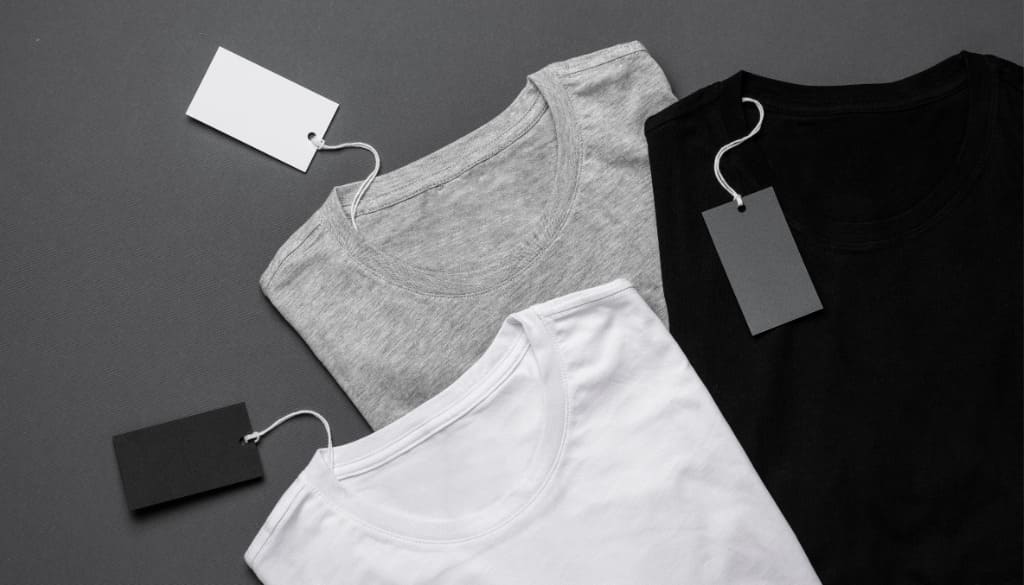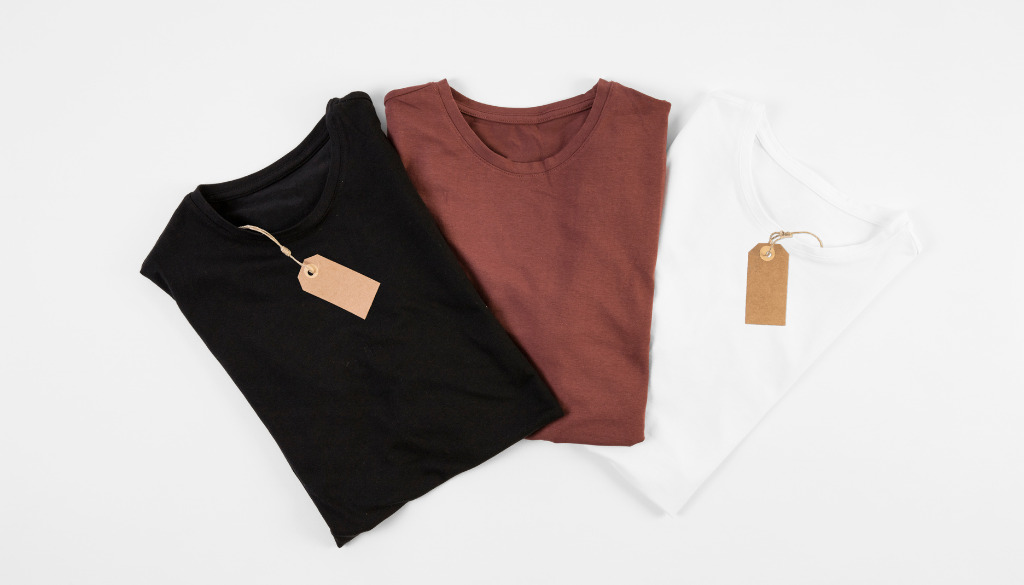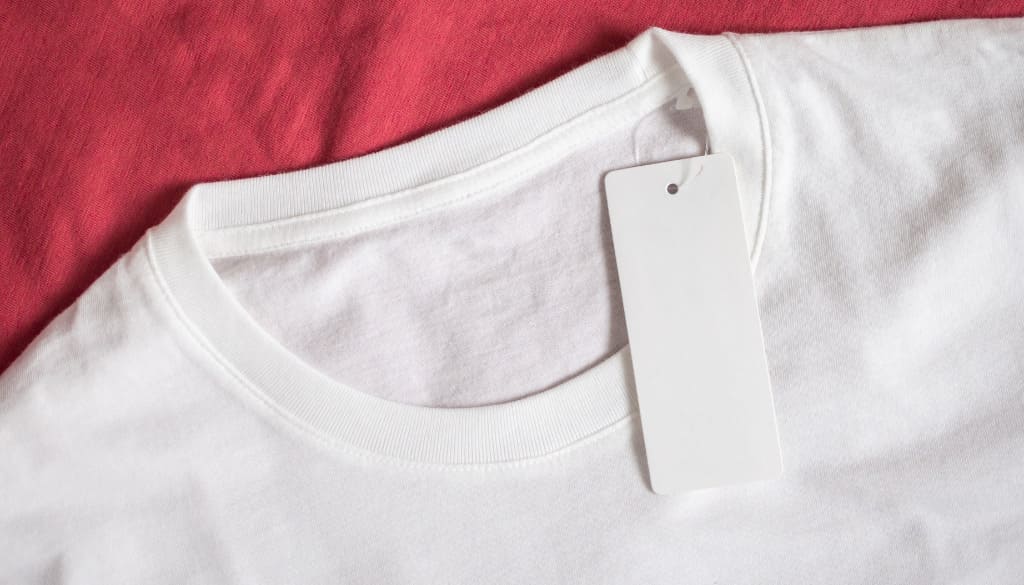In today’s increasingly competitive world of online business, particularly in fashion and retail, White Label Clothing is becoming a strategic choice for many sellers. When combined with the POD model, this approach not only helps reduce costs but also opens up opportunities to flexibly build a personal brand. In this article, FlashShip will take a closer look at the White Label model, the distinctions between White Label and Private Label, and why this model is a powerful catalyst for sellers aiming to scale up in the e-commerce arena.
What is White Label Clothing?

White Label Clothing, also known as “white label” products, refers to basic fashion items that do not carry any specific logos or branding. These products are sold wholesale by manufacturers to retailers or sellers, allowing them to add their own branding or customize the products as they wish.
Simply put, white label products are like blank canvases that you, the seller, can creatively design and transform into items that reflect your unique brand identity. The most common white label products include t-shirts, hoodies, sweaters, leggings, caps, and accessories.
Pros and Cons of White Label Clothing
Like any business model, White Label Clothing has two sides. Understanding its advantages and disadvantages will help you make informed decisions and build a solid strategy.
Pros:
- Saves time and R&D costs: This is the biggest benefit. You don’t need to spend months and large amounts of money on product research and development (R&D), testing fabric materials, creating prototypes, etc. All of these complex and costly stages are handled by the manufacturer.
- Faster time to market: Instead of waiting for the production process to start from scratch, you can have products in hand and ready to sell within just a few weeks or even days. This allows you to quickly capitalize on fast-moving fashion trends.
- Low initial risk: Since the products are already mass-produced and trusted by many other brands, their quality has often been proven in the market. This reduces the risk of manufacturing defective goods or launching products that don’t resonate with customers.
- Focus on your core strengths: As a seller, your strengths lie in marketing, content creation, community building, and customer service. White Label frees you from the burdens of manufacturing, allowing you to focus entirely on activities that build brand value and drive revenue.
- Reliable product quality (if you choose the right supplier): Reputable White Label suppliers often have strict quality control (QC) processes to maintain their reputation. You benefit from their manufacturing expertise and experience.
Cons:
- Limited product uniqueness: This is the biggest downside. You cannot change the core design, materials, or product fit. The t-shirt you’re selling may be physically identical to those sold by dozens of competitors.
- High competition: Due to the low entry barrier, many others may be selling similar products. The competition shifts from the product itself to branding, pricing, and customer experience.
- Dependency on suppliers: You’re fully reliant on the supplier for inventory, pricing, and quality. If they run out of a bestselling item, raise prices, or compromise on quality, your business could be directly affected.
- Difficult to build a unique product story: It’s harder to tell a compelling story like “we handpicked this natural bamboo fabric ourselves” when you’re essentially reselling an off-the-shelf product. The differentiation must come from your brand and marketing approach.
- Potentially lower profit margins: Since you’re buying finished products, the cost per unit is often higher compared to producing them yourself at scale. This can lead to slimmer profit margins on each item sold.

Comparing the White Label and Private Label Models
Many people often confuse White Label with Private Label. While both aim to sell products under your own brand, they follow two entirely different paths.
|
Criteria |
WHITE LABEL |
PRIVATE LABEL |
|
Definition |
Reselling generic, unbranded products from a manufacturer under your own brand. |
Hiring a manufacturer to create a completely new, exclusive product based on your own design and specifications. |
|
Level of Customization |
Low. You can only customize labels, packaging, and tags. The core product cannot be modified. |
High. You have full control over materials, colors, fit, sizing, design details, etc. |
|
Initial Cost & MOQ |
Low. MOQ is usually small, ideal for new sellers with limited capital. |
Very high. Large MOQs are required ( set-up custom production lines, high R&D, sampling costs) |
|
Time to Market |
Fast. A few days to a few weeks. |
Slow. Several months to a year. |
|
Exclusivity |
Non-exclusive. Many competitors can sell the exact same product. |
Fully exclusive. The product is uniquely yours and cannot be copied. |
|
Risk |
Low. Main risks involve marketing and brand building. |
High. Risks include upfront investment, market rejection, and excess inventory. |
|
Best Fit For |
New sellers, market testers, brands needing a fast launch, and businesses with limited budgets. |
Established brands seeking complete differentiation, with strong financial resources and higher risk tolerance. |
How to Start a White Label Clothing Business
Are you a POD seller looking to launch your own fashion brand using the White Label model? Here are five detailed steps to help you get started quickly and effectively:
Step 1: Choose a Reliable Supplier
Selecting a trustworthy supplier is the foundation of success in the White Label business. You need to thoroughly research each supplier’s reputation, product quality, pricing, and support policies. Some reputable and well-known suppliers often chosen by POD sellers include FlashShip, Gelato, and others. Choosing the right supplier ensures consistent quality and helps you build long-term brand credibility.
Key considerations when choosing a supplier:
- Product quality: Request samples to evaluate the fabric, stitching, and fit firsthand.
- Pricing and discounts: Compare prices across different suppliers to get the best deal.
- MOQ (Minimum Order Quantity): Choose a supplier with an MOQ that fits your budget.
- Return and defect handling policies: Crucial for protecting your business.
- Supply capacity: Can the supplier maintain consistent inventory, especially during major sales seasons?
Step 2: Select the Right Product Models
Once you’ve chosen a supplier, the next step is to pick product models that suit your target market. Pay attention to material, design, and the popularity of each item. Products that are high-quality, trendy, and aligned with your audience’s preferences will make it easier to attract and retain customers over time.

Step 3: Add Your Personal Brand Identity
This is the key step to differentiating yourself in a competitive market. Focus on designing a distinctive logo, labels, slogan, and unique brand messages. A strong, personalized brand identity will leave a lasting impression on customers and make your products stand out from the many similar items available.
Step 4: Build Effective Sales Channels
To reach and attract customers, consider selling through your own website, online marketplaces, or popular social media platforms like Facebook, Instagram, and TikTok. Consistently build your brand image and apply strategic marketing tactics to increase visibility, build trust, and boost sales effectively.
Step 5: Fulfillment and Customer Service
Once you receive an order, it’s essential to process, package, and ship it promptly. This is where fulfillment partners like FlashShip come in. Instead of handling packaging yourself, you can store your inventory at FlashShip’s fulfillment centers. When an order comes in, the system automatically processes it, packages it professionally (according to your branding), and delivers it directly to your customer.
Benefits of Combining POD with White Label
Here are some key benefits of integrating Print-on-Demand (POD) with the White Label model:
Inventory Optimization
With the POD model, products are only manufactured once an order is placed by a customer. This means you don’t need to purchase large quantities in advance, eliminating the risks of overstocking or having outdated inventory. Not having to store excess goods also significantly reduces warehousing, inventory management, and product maintenance costs, helping you manage cash flow efficiently and optimize business resources.
High Level of Personalization
One of the standout advantages of combining White Label with POD is the ability to personalize each product to a high degree. POD allows sellers to customize designs based on each customer’s unique preferences. When applied to White Label products, this gives sellers the flexibility to integrate their own brand identity or creative designs, making the product more unique and aligned with the diverse tastes of their target audience. This level of personalization not only leaves a stronger impression on customers but also plays a key role in building a distinctive, powerful brand presence in the market.

Scalable and Flexible Growth
Combining POD with White Label allows businesses to scale without limitations in terms of quantity or product variety. As market demand increases, you can easily scale up production and expand your product range without the traditional risks associated with manufacturing, inventory, or upfront investment. This flexibility enables you to quickly seize market opportunities and experiment with new products with minimal financial risk. When a product succeeds, you can expand it faster and more effectively.
Cost and Time Efficiency
This combination also helps sellers save on initial investment costs related to machinery, raw materials, storage, and labor. You won’t need to manage production or maintain equipment, and time-to-market is much faster compared to traditional manufacturing. Instead, you can dedicate your time and resources to brand development, marketing, customer service, and revenue growth.
White Label business combined with POD is an intelligent and effective selling strategy. With a smart strategy and a reliable supplier like FlashShip, sellers can fully leverage the advantages of white label clothing to boost sales, build a strong personal brand, and achieve outstanding success in the market.
For more information or to create an account, contact us via hotline: (+84) 943 024 337 or visit our website at FlashShip.net for support!
Read more articles:

